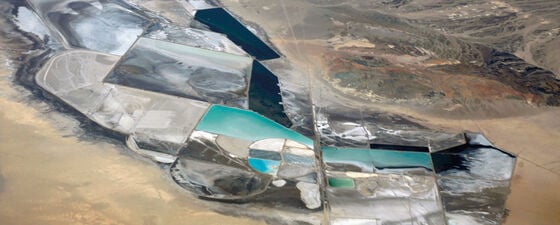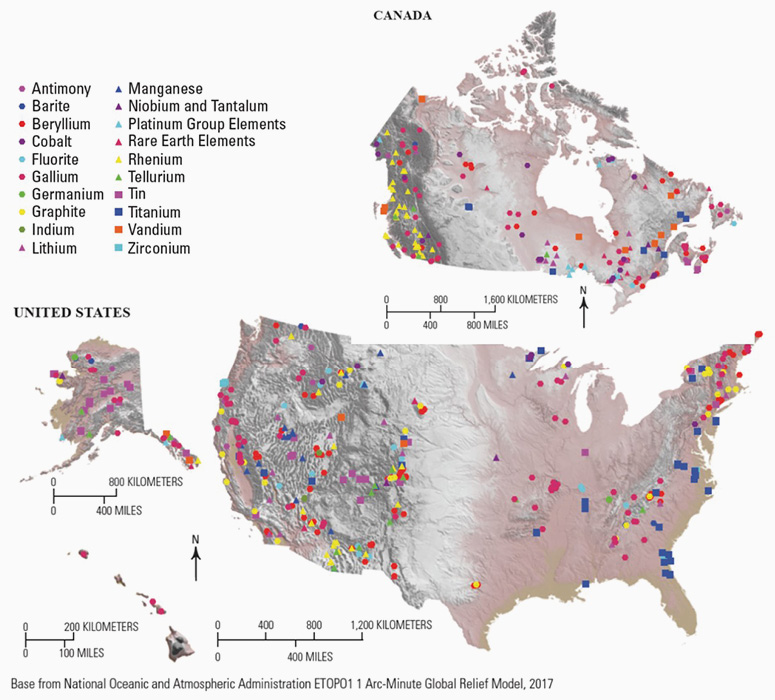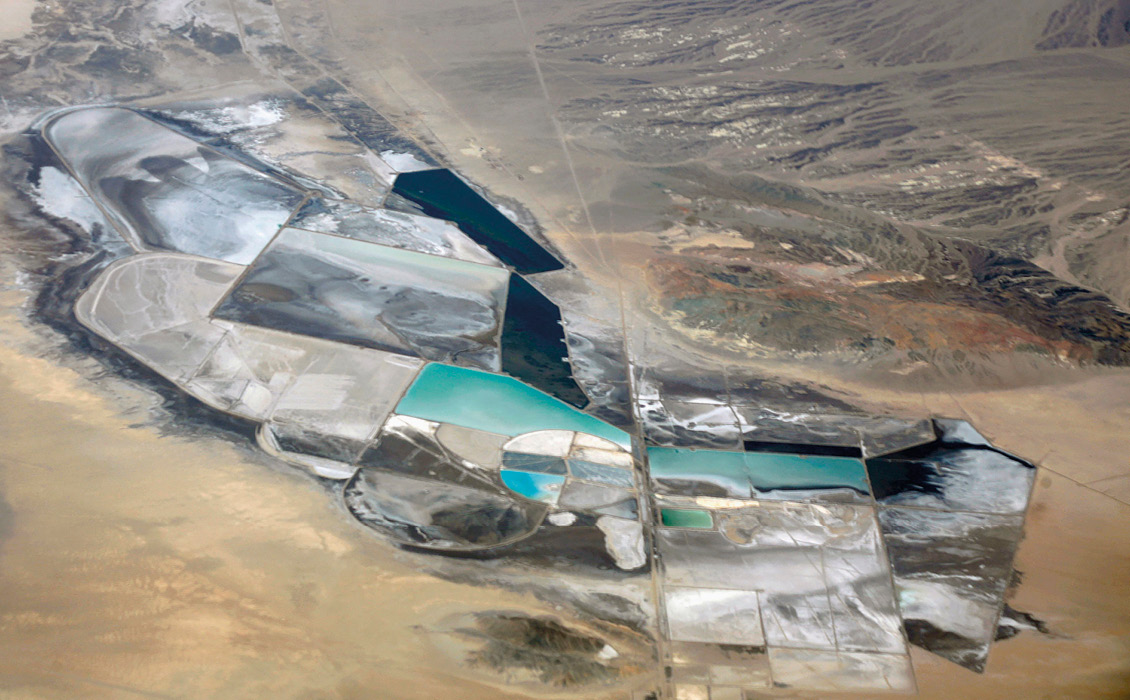The petroleum industry is currently facing various challenges, including a global movement toward a low-carbon world. These challenges, however, also provide the oil and gas industry geoscientists and engineers with new opportunities for exploration and production as well as research and development. Exploration for critical minerals in sedimentary rocks and basins, briefly described in this article, is a case in point. This field is rapidly growing in the US as the country seeks to decrease its dependency on China, which has been the dominant exporter of critical minerals in the past three decades. In 2020, for instance, the US Department of Energy allocated $122 million for regional research initiatives to produce critical minerals and rare earth elements from the country’s sedimentary basins.
What Makes a Mineral Critical?
Mineral economics textbooks have remarked that the terms strategic, critical and essential minerals are the outcome of war emergency in relation to supply status of minerals necessary for winning a war. However, these terms are important for peacetime as well, because modern civilization depends, more than ever, on a vast array of minerals. Indeed, we currently use all the elements of the periodic table. A cell phone, for instance, utilizes about 75 different elements.
A college textbook, similar to AGI’s Glossary of Geology, defined a ‘strategic mineral’ as one that a country has little resource of its own and thus depends on imports; ‘critical mineral’ has some occurrence in the country, while ‘essential mineral’ has both fundamental usefulness and large occurrence. However, definitions of these terms vary. A 2018 US Geological Survey listed 35 critical or strategic minerals “whose absence would have substantial consequences for the US economy or national security.” Th ese minerals are “essential for the manufacture of high technology devices, national defense applications, and green energy-growth industries.”
Criticality depends not only on industrial importance or economic value but also on vulnerability, risk and disruption in supply chain due to various factors such as international conflicts. Table salt was once a critical mineral for ancient peoples; today it is produced in abundance. Rare earth elements were not even known in premodern times; today they are among critical minerals for the industrial nations.
Another related term is ‘energy mineral’. In a strict geologic definition, fossil fuels are not ‘minerals’, because they are organic. Moreover, oil and gas are not solid and are mixtures of various hydrocarbon molecules. In 1977, the American Association of Petroleum Geologists founded the Energy Mineral Division to advance the science of nonpetroleum minerals that can be used for energy production, such as coal and uranium. Today, energy minerals are sometimes considered as those used to produce electricity or fuel. In this way, there are large overlaps between critical and energy minerals.
Minerals, Sediments and Basins
All rocks are made of minerals and they, in turn, of elements; however, their distributions are not uniform. Certain elements and minerals are more abundant in some rock formations than others. Igneous, metamorphic, and sedimentary rocks are all valuable for mining, with sedimentary rocks classified into clastic, chemical, and organic types. Th is classification is not merely a semantic issue; it pertains to the formation processes of sediments, and thus guides us in mineral exploration. Clastic rocks, from conglomerates to clays, are derived from pre-existing rocks; chemical rocks form by precipitation or evaporation in marine environments, and organic sediments come from plants or other organisms. Minerals occur in sedimentary rocks via various mechanisms.
Sediment-host deposits of base metals such as lead, zinc, and copper are well known. Indeed, the classification of ore deposits known as Mississippi Valley Type (MVT) around the world were named after the successful extraction of such deposits along the Mississippi River in Missouri, Iowa, Wisconsin, and Illinois (‘the Lead Belt’) as early as the 18th century. These are high-grade sulfide bodies hosted in carbonates.
Some sedimentary rocks are also known to contain low- to mediumgrade uranium-bearing minerals. Colorado Plateau-type sandstones, the site of the post-World War II ‘uranium rush’, are sandstone bodies of Jurassic– Cretaceous age widely distributed in Colorado, Utah, and Wyoming. These sandstone formations with alternating red (oxidizing) and white or green (reducing) layers are ideal for uranium mining because uranium is mobile in oxidizing environments and precipitates in reducing environments. Black shales may contain 50 to 250 ppm uranium. Phosphorite deposits can also contain uranium oxides within apatite and fluorite.
Although in the subsurface, dolomite may be a petroleum reservoir, dolomite layers in basin-margin exposures may also provide a major source for production of magnesium. Dolomite itself can be used as a flux for the smelting of iron and steel. Magnesite (MgCO3), another industrial mineral, occurs in shales and limestones, in association with salt and gypsum, or within regolith above ultramafic rocks. In the US, sedimentary magnesite mines are located in California, Nevada, Idaho, Texas, and Florida.
Vanadium used for production of steel alloys, for glass coating, and as a catalyst, is present in considerable concentrations in black shale, coal, crude oil, oil shale, and oil sands.
Sedimentary basins sometimes host igneous intrusions which create ideal conditions for ore deposits. For instance, in Salt Lake City, Utah, there is an open-pit copper mine called the Kennecott or Bingham Canyon mine, which is the second largest of its kind in the US and the deepest excavated mine in the world. This huge deposit of copper (as well as gold and silver) was formed by a 35-million-year old quartz monzonite porphyry that intruded Late Paleozoic sediments of the Oquirrh Mountains.
Rare Earth Metals
Rare earth elements or metals (REEs) include the entire lanthanide series (with atomic numbers from 57 to 71) as well as scandium and yttrium, because of their similar chemical and physical properties. REEs are classified into light (atomic numbers 57 to 64) and heavy (atomic numbers 65 to 71). Yttrium is included in the heavy REEs because it also has paired electrons. REEs have a wide range of applications in electronics, glass and other industries and they are used as permanent magnets, alloys, and catalysts (including petroleum-refining catalysts).
REEs are not really ‘rare’ on Earth, but unlike the base metals such as chromium and zinc which are found individually in ore deposits, REEs occur together in a limited number of minerals. Moreover, their mining results in toxic substances which must be properly dealt with.
Although igneous rocks, especially carbonatites and alkaline magmatic rocks, are the major sources of REEs, sedimentary deposits can also yield REEs. Major REE minerals include bastnaesite, monazite, apatite, and xenotime. The presence of REEs in sedimentary rocks largely depends on the provenance of the sediments as REEs are insoluble in water.
Placer deposits, especially monazite, in Ontario’s Elliot Lake mining district, contain heavy REEs and the Alberta black shale deposits in Canada are also attractive for REE mining.
Phosphorite deposits from Idaho to Florida are proven sedimentary sources for REEs. Bastnaesite, the major mineral for REEs, has been found in karst bauxite deposits in the Balkan region of Europe.
Laterite deposits are intensely weathered bedrocks in tropical to sub-tropical climates. More than 250 laterite deposits containing REEs have been mapped around the world. One particular type, ion-adsorption clays (formed by the intense weathering of granitic rocks) are massively mined in southern China as the world’s main source of heavy REEs. These elements are adsorbed to the surface of kaolinite, halloysite or illite.
Minerals From Brines
Formation waters in oil fields are often brine with high concentrations of dissolved salts and thus contain various minerals. These toxic waters must be treated, stored, disposed or reinjected into the wells. However, formation waters also offer important sources for mineral extraction. These waters may be classified as four types: reservoir water associated with oil and gas, bottom water at the base of hydrocarbon column, edge water to the sides of the hydrocarbon column, and water in barren traps. Compared to hard-rock mining which is time-intensive and has adverse impacts on the land surface and likely on groundwater, formation waters are easier to exploit.
Lithium is one of the valuable metals that can extracted from brine. A successful US example is Albemarle Corporation’s Silver Peak mine that has been in operation since 1966 (it is North America’s only lithium brine mine).
Lithium-ion batteries power many devices from cell phones to electric cars. Global demand for lithium is expected to increase and Goldman Sachs Group has called lithiumrich formation waters ‘the new gasoline’. Moreover, lithium processing also yields other critical elements and minerals such as cesium and rubidium as residues.
In 2017 the Canadian mining company, MGX Minerals, acquired the Lisbon Valley Petrolithium Project in the Paradox Basin of south-east Utah, that is designed to extract lithium and other minerals and salts from brine waters in the Lisbon Valley oil and gas fields. Lithium content in these formation waters is as high as 750 ppm.
Tesla Eyes Opportunity
In the 1970s, several authors reported lithium in various clays, with concentrations from several ppm in some montmorillonites to as high as several thousand ppm in hectorites.
In 2020, the electric car company Tesla announced obtaining lithium mining rights in 10,000 acres in Nevada where lithium has been proven abundant in vast and thick tracts of clay deposits. Tesla plans to extract lithium from claystone by the weak acid leach technique. Laboratory experiments have shown over 80% recovery within several hours; the leftover clay would be put back in the land. Tesla is not the only lithium-bearing clay mining company in Nevada. Cypress Development Corp owns the Clayton Valley Lithium Project totaling 5,430 acres, in south-west Nevada.
Helium From Natural Gas Fields
Helium, the second simplest element (after hydrogen), is an inert (noble) gas. Helium is rare on earth and is also considered a non-renewable resource because it can escape into outer space. Although helium can be released by volcanic activity, it is mainly produced in the radioactive decay of uranium, thorium and elements present in both basement and sedimentary rocks. Being a buoyant gas, helium can migrate upwards and accumulate in natural gas reservoirs. As much as 7 percent radiogenic helium has been reported from gas fields, from which helium can be extracted by low temperature fractional distillation. The Petrolia Oil Field in Clay County, Texas and the Texas Panhandle gas field are both historical sources of helium production dating back to the 1920s.
Helium has a wide range of industrial applications including cryogenics (liquid helium to cool superconductive magnets), shielding gas in arc welding, helium-neon lasers, carrier gas in gas chromatography, supersonic wind tunnels, etc.
Hydrogen
Hydrogen was first envisioned as a fuel (extracted from water) in Jules Verne’s The Mysterious Island published in 1874. Verne knew about the abundance of water on Earth, but in his time, nobody was aware of abundant natural gas reserves. Ironically, natural gas, which has been flared for decades, is now considered a major source for hydrogen, probably a better source than the much-needed water (‘green hydrogen’ can be produced by water electrolysis). ‘Grey hydrogen’ is already produced from natural gas in places like the Alberta Basin, which is primarily used in petrochemical facilities. However, Canada now has its eyes on massive production of ‘blue hydrogen’ from natural gas via steam methane coupled with a carbon capture and storage system. In this way, natural gas opens up a new frontier for hydrogen fuel during the energy transition in the coming decades.
Mineral mining requires sophisticated technologies and petroleum companies, which have advanced some of the best geological, geochemical and geophysical techniques for exploration of oil and gas, are in an excellent position to explore for critical minerals in sedimentary basins. These new ventures will also demand participation of geoscientists and engineers who want to learn new techniques. Perhaps the science of sedimentary and geochemical processes in petroleum basins for critical minerals has come of age.







